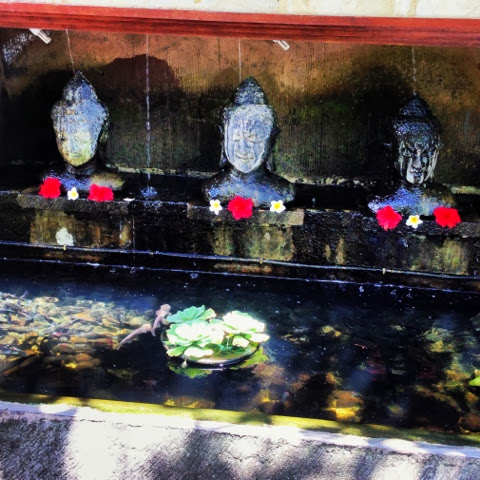Think for a moment of all the people in your life. Your family and friends, colleagues and team mates, distant acquaintances that you met once upon a time. Now imagine that in the course of the next three years, over a quarter of them will be die, dragged away and murdered in cold blood. That's one in four of everyone you know. Perhaps one of them is you...
It's difficult to picture but for every Cambodian over the age of thirty, this is their reality. When the Khmer Rouge took power over the country in the seventies, every family in Cambodia was separated and sent to either work camps or prisons where three million people were then killed, most for no reason whatsoever. Everyone has their own story but they're all echoes of one another, filled with death, suffering and utter heartache.
As we approached The Killing Fields we prepared ourselves for the most depressing day of our trip. Dark clouds had begun to gather overhead and the first spots of rain fell the minute we stepped down from our tuk tuk. It quickly turned into a plummeting monsoon. Pathetic fallacy at its best.
We wandered around the Killing Field with an audio guide which explained the horror of what went on there just thirty years ago. This particular site near Phnom Penh is just one of hundreds of its kind across the country and is where prisoners were brought to be killed during the civil war. Their bodies were thrown into deep pits in the ground which formed mass graves throughout the fields. Many have now been excavated but even today, fragments of bone, teeth and rags continue to be found, uncovering more and more victims.
The audio guide does not hold back. It tells the devastating story in brutal detail in the hope that the horror will prevent such events from ever happening again. Walking around in the pouring rain we saw the clothes of young babies who had been torn from their mothers and the cracked skulls of prisoners who were beaten before having their throats slit. It was completely heartbreaking. What should otherwise have been a peaceful and beautiful woodland is poisoned with the overwhelming presence of death lingering throughout.
The second war memorial site is the S21 prison where victims were held before being taken to the fields. It was once a high school but Pol Pot, the leader of the Khmer Rouge, transformed the classrooms into torture chambers and cell blocks. These rooms became home to hundreds of victims who lay shackled to the floor day in and day out, waiting to die.
Some of the rooms at S21 have been left untouched but others have been turned into small museums, filled with photographs and testimonies from during the war. One cell block contains the photographs of every prisoner who ever stayed there and our guide told us that when the prison first reopened many Cambodians came to visit to see if they could find their lost relatives on the walls there. Even today many families don't know what became of their loved ones during those years, hoping for the best but expecting the worst.
Another room contains photographs of all the 'comrades' who worked at the prison, those who answered to Pol Pot. It's easy to condemn them for what they did but our guide, who had three family members die at the hands of these people, explained they had very little choice in the matter. The majority were young, uneducated teenagers who were tricked into joining the force with promises of a better life for them and their families. The reality was very different but once in, there was no way out. They either killed or were killed and if a former comrade was sentenced to death or imprisonment their whole families would join them. The Khmer Rouge believed that to kill a tree you must tear out the roots.
Faced with the choice of the death of your family or the murder of strangers can you honestly say with any confidence that you'd act differently? Perhaps you would but it's impossible to know without being put in that position and I hope to the ends of the earth that none of us will ever live to find out.
During the rule of the Khmer Rouge Cambodia was completely stripped of its identity. Music, religion and books were all banned, currency was abolished and even relationships were prohibited. It's incredible how much they've achieved in just thirty years, building Cambodia back up to the wonderful country that it once was. The people here will never forget the pain they suffered during the Civil War but they certainly won't let that hold them back either. It's truly inspiring.






































